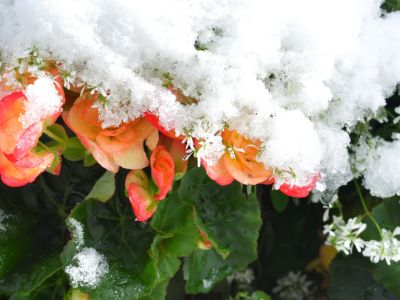Wintering Over Begonias in Cold Climates
In order to keep and enjoy begonias in the garden each year, begin by wintering begonias indoors.
Overwintering Tuberous Begonias
Tuberous begonias should be dug up and stored indoors during winter until the return of warmer weather in spring. Begonias can be dug up in fall once foliage has faded or just after the first light frost. Spread begonia clumps on newspaper and leave them in a sunny area until thoroughly dry — about a week. Once they have sufficiently dried, cut away any remaining foliage and gently shake off excess soil. To prevent problems with fungus or powdery mildew while wintering begonias, dust them with sulfur powder prior to storage. Store begonia tubers individually in paper bags or line them in a single layer atop newspaper. Place these in a cardboard box in a cool, dark, dry location. You should also be overwintering a begonia grown outdoors in containers. Pot-grown begonia plants can be stored in their containers as long as they remain dry. They should also be relocated to a protected area that’s cool, dark, and dry. Pots can be left in an upright position or slightly tipped.
Overwintering Annual Wax Begonia
Some begonias can simply be brought indoors prior to the onset of cold weather for continual growth, such as with wax begonias. These begonias should be brought indoors for overwintering rather than digging them up. Of course, if they’re in the ground, they can be carefully transplanted into containers and brought indoors for growing throughout winter. Since bringing wax begonias indoors can cause stress on plants, which leads to leaf drop, it often helps to acclimate them beforehand. Before bringing wax begonias indoors, however, be sure to treat them for insect pests or powdery mildew first. This can be done by spraying plants or gently washing them with warm water and bleach-free dish soap. Keep wax begonias in a bright window and gradually reduce the amount of light to help them adjust to an indoor environment. Increase humidity levels but cut down on watering over winter. Once warm temperatures return, increase their watering and begin to move them back outdoors. Once again, it helps to acclimate plants to reduce stress.
